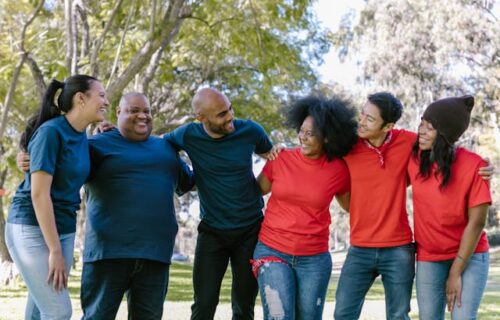
Sharpen your saw
I’ve spent a lot of the past 10 years writing grant proposals and reports, and I’ve been musing about the parallels between how a majority of funders invest their money and how individuals invest their time and energy.
If you’re an organization—particularly a non-profit—with a proven track record of providing highly successful (or, in grant-speak, impactful) programs to large numbers of people in need (“underserved populations”) and you have a good grant writer on staff, you can usually receive substantial funding for these programs, including for the people who run them.
It’s much more difficult to get what’s called “general operating” or “genops” funds—money to pay overhead, such as rent, utilities, insurance, and administrative staff who support the organization as a whole rather than serving in one particular program. Some of these expenses can be written into the budget on a line called “indirects,” usually a capped percentage of the direct program expenses and never really enough to cover the general operating costs.
There’s a third type of organizational activity called “capacity building.” Grantors are sometimes more willing to fund capacity building than straight genops because the intended outcome is to build the effectiveness of the organization rather than simply keep the lights on so it can continue to function at its current level.
 If this all sounds like a chicken-and-egg proposition to you, you’re absolutely correct: you must have general operating/startup funding to even start implement good programs, but you also need to have some proof of the impact of your programs to get genops funding so you can reach the point where you can apply for capacity building.
If this all sounds like a chicken-and-egg proposition to you, you’re absolutely correct: you must have general operating/startup funding to even start implement good programs, but you also need to have some proof of the impact of your programs to get genops funding so you can reach the point where you can apply for capacity building.
If you’re familiar with Franklin Covey’s 7 Habits of Highly Effective People, capacity building is the organizational equivalent of sharpening your saw.
Whew.
What does that detour into grant land have to do with health coaching?
Think about where you invest your time and energy:
- Do you spend most of your time on programming—your work in the world—to the detriment of your home life?
- Do you spend it on general operating functions of home life—making sure that everyone at home is clean, fed, watered, entertained, taken to school and afterschool and appointments and otherwise cared for—to the detriment of your program work?
- Do you spend it on capacity building—increasing your ability to be more effective (impactful!) in your programs and more efficient in your general operating functions?
I hear you laughing—between program and genops, who’s got time for capacity building?
(And speaking of chickens and eggs, how many eggs can a chicken lay while running around with its head cut off?)
As a business owner, I think about capacity building as working on my health coaching practice rather than in it: in addition to the actual coaching I do (program) and administrative tasks such as bookkeeping, marketing, etc. (genops), I set aside time to take a step back and look at where I want to be in a month, a year, 5 years, 10 years, set goals and objectives to get there, and so on.
 As a health coach, I see my work as helping you to build your personal capacity: I help you to take a step back from all the programming and genops functions that take up all your time and energy and figure out how to invest some time in health and well-being—not only to be most effective at work and most efficient in general operations but also to have time and energy left over for what you really want to do and feel you can’t given the current demands on you.
As a health coach, I see my work as helping you to build your personal capacity: I help you to take a step back from all the programming and genops functions that take up all your time and energy and figure out how to invest some time in health and well-being—not only to be most effective at work and most efficient in general operations but also to have time and energy left over for what you really want to do and feel you can’t given the current demands on you.
I help you sharpen your saw.
How exactly does that work?
If you’re a Netflix user, you cannot have avoided the hoopla surrounding their new series, Tidying Up with Marie Kondo, based on her bestseller, The Life-Changing Magic of Tidying Up.
I leave the tidying up of your stuff to Marie—I help you Konmari your calendar and tidy the more intangible side of your life!
Ready to “spark some joy” around that project?
- If you live in the Ann Arbor area, I invite you to attend a FREE workshop with me on January 31st hosted by Advantage Strength & Conditioning.
- If you aren’t local, I invite you to join me for a free capacity building webinar at 12pm ET on February 26th.
Ting!



